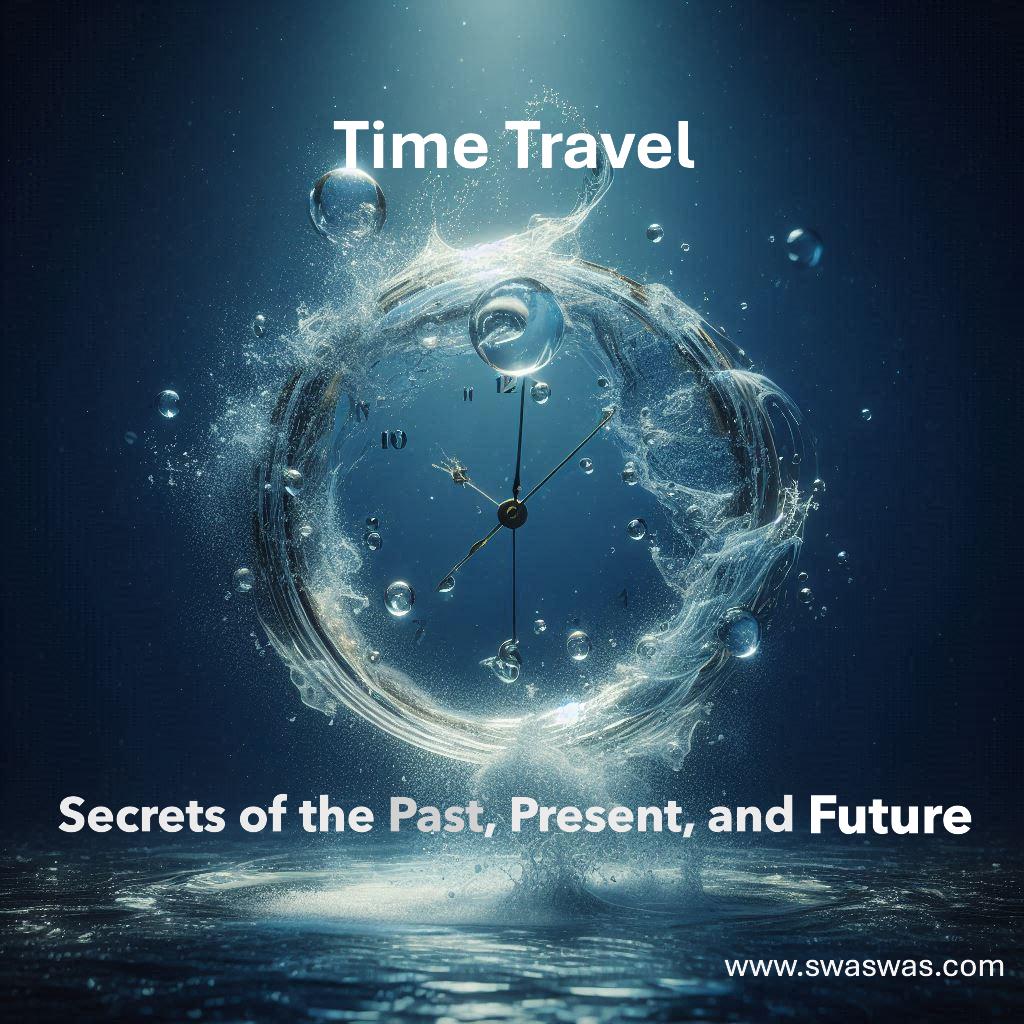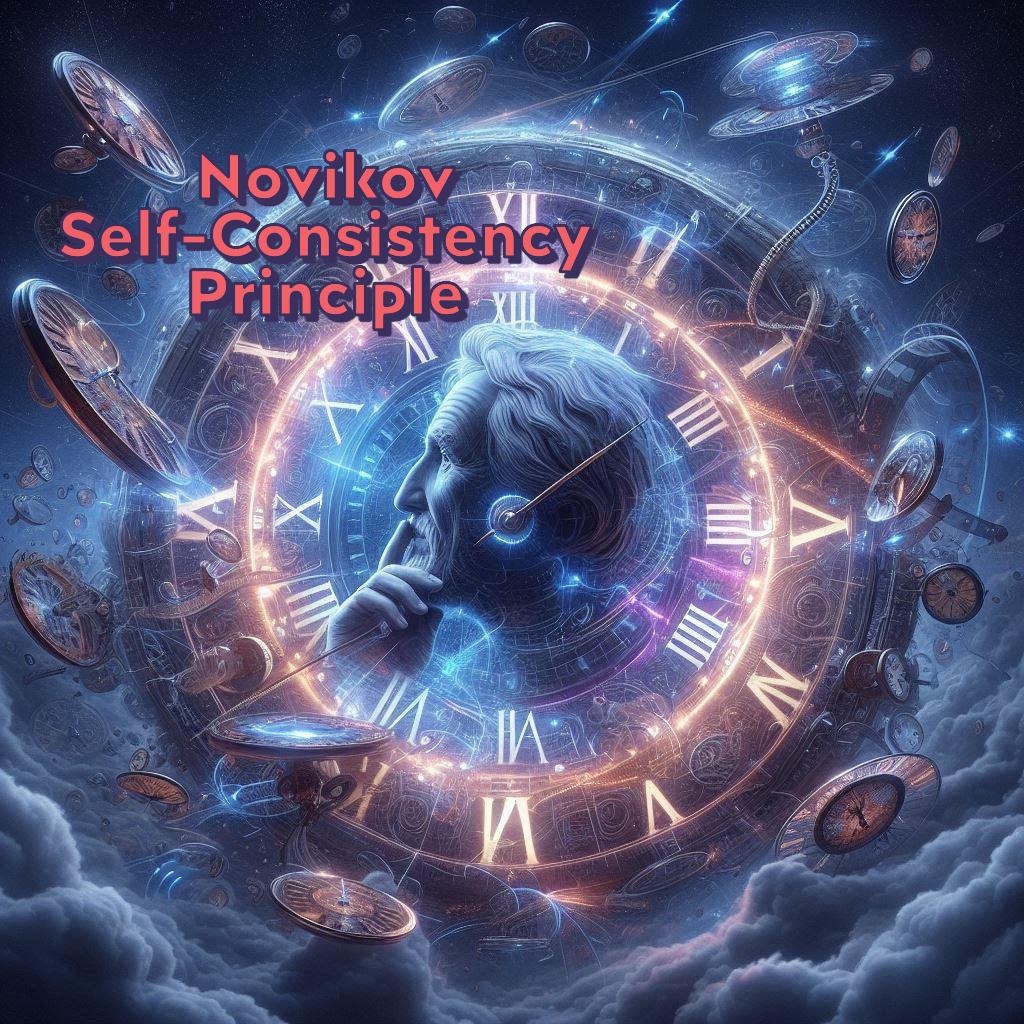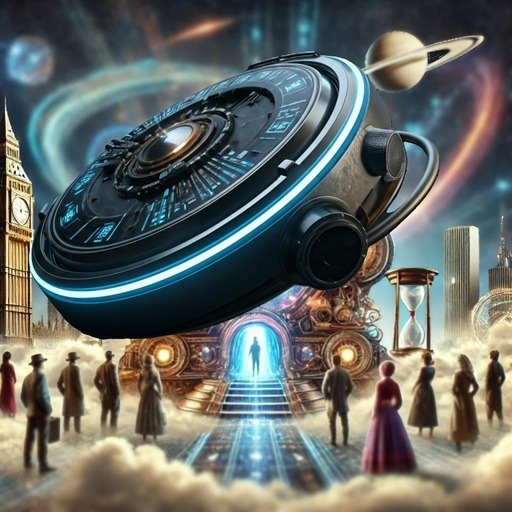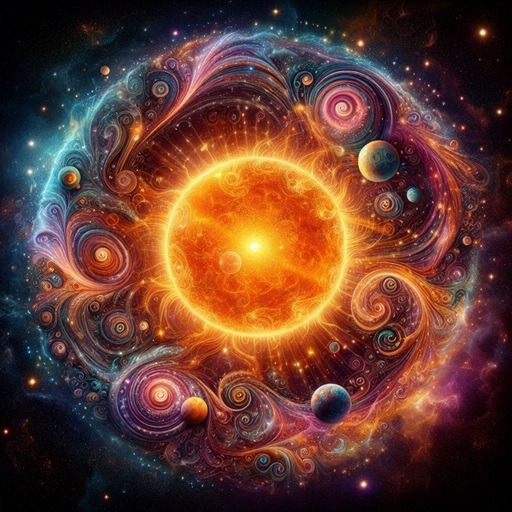Time travel has captivated the human imagination for centuries, weaving its way into myths, literature, and modern science fiction. It represents the ultimate journey, offering a glimpse into the mysteries of the past, insights into the present, and possibilities for the future. But beyond the realm of fantasy lies a fascinating scientific and philosophical exploration of time itself. From Newtonian cosmology to the mind-bending theories of relativity and quantum mechanics, the concept of traversing time challenges our understanding of causation, identity, and the universe’s very fabric. This article delves into the theories, paradoxes, and practical limits of time travel, unravelling its secrets and exploring its potential impact on humanity’s future.
How Time Travel Works
Time travel, a staple of science fiction, is rooted in the principles of physics, particularly those related to space-time. At its core, time travel refers to the hypothetical ability to move through different points in time, much like traveling through space. To understand how time travel might work, we must delve into the theories of physics, including Einstein’s general theory of relativity and the concept of wormholes.
Einstein’s general relativity introduces the idea that time and space are interconnected, forming a continuum known as space-time. Massive objects like stars and planets create distortions in this fabric, much like a heavy ball placed on a stretched rubber sheet. These distortions, or gravitational fields, affect the flow of time, a phenomenon known as time dilation. For instance, time passes slower for objects moving at speeds close to the speed of light or in strong gravitational fields compared to those in weaker fields.
Another theoretical pathway for time travel involves wormholes, or Einstein-Rosen bridges. These are hypothetical shortcuts through space-time, connecting two distant points via a tunnel. If one end of the wormhole were accelerated to near-light speeds and then returned to its original position, time dilation could, in theory, create a time differential, allowing for time travel. However, stabilizing a wormhole would require exotic matter with negative energy density, a material yet to be discovered.
Quantum mechanics also introduces possibilities for time travel through phenomena like quantum entanglement and closed timelike curves. While these concepts are highly theoretical, they hint at the potential for bending or looping time under certain quantum conditions.
Despite the fascinating theories, time travel faces significant challenges. The energy requirements for creating and sustaining a time-travel mechanism are astronomical. Moreover, paradoxes, such as the grandfather paradox—where altering the past could prevent the time traveler’s own existence—raise questions about the feasibility and implications of such journeys. Nevertheless, research continues to push the boundaries of our understanding, keeping the dream of time travel alive.
Definition
Time travel can be defined as the theoretical movement between different points in time, akin to traveling through physical space. It involves the ability to traverse forward into the future or backward into the past, a concept deeply rooted in both scientific inquiry and philosophical speculation. While often depicted as an adventurous leap through time in literature and media, the scientific definition is far more nuanced and grounded in the principles of physics.
In classical physics, time is viewed as a linear and absolute progression, moving from past to present to future. However, modern physics, particularly Einstein’s theory of relativity, redefined time as a relative dimension intertwined with space. This framework introduced the idea that time is not constant but can vary depending on factors such as velocity and gravity. For example, time dilation—a proven phenomenon—occurs when time slows down for objects moving at high speeds or in intense gravitational fields.
From a scientific standpoint, time travel into the future is not only possible but has been experimentally observed on a microscopic scale. High-velocity particles in accelerators experience time dilation, effectively traveling fractions of a second into the future. However, backward time travel remains speculative and fraught with theoretical hurdles.
Cultural and philosophical definitions of time travel often extend beyond the confines of physics, exploring its implications for human existence, morality, and identity. Time travel stories commonly grapple with questions of causality, free will, and the ethical dilemmas of altering history.
In addition to its definition, time travel is often categorized by its mechanisms. Forward time travel typically involves time dilation or cryogenic suspension, while backward time travel theories hinge on speculative constructs like wormholes or closed timelike curves. Each method carries its own set of scientific, philosophical, and technological challenges.
Understanding time travel requires an interdisciplinary approach, combining insights from physics, metaphysics, and even psychology. As a concept, it transcends mere science fiction, challenging us to rethink our understanding of reality and our place in the cosmos.
Time in Philosophy
The nature of time has been a central concern in philosophy for centuries, with thinkers across eras attempting to unravel its mysteries. Philosophical discussions on time primarily focus on its ontology, perception, and implications for human existence. These explorations provide a foundation for understanding time travel’s deeper significance and the questions it raises.
One of the earliest philosophical perspectives on time comes from ancient Greek philosophers. Heraclitus proposed that time is in constant flux, symbolized by his famous saying, “You cannot step into the same river twice.” In contrast, Parmenides argued for a static and unchanging reality, asserting that change is an illusion. These contrasting views laid the groundwork for subsequent debates on whether time is dynamic or static.
In the Middle Ages, St. Augustine of Hippo offered a profound analysis of time in his work Confessions. He described time as a subjective experience, emphasizing the role of human consciousness in perceiving the past, present, and future. Augustine argued that the past exists as memory, the present as awareness, and the future as expectation. This idea shifted the focus of time from an external phenomenon to an internal, psychological construct.
Modern philosophy has further expanded the discussion of time. Immanuel Kant, for example, viewed time as a fundamental category of human cognition, an innate framework through which we perceive the world. In contrast, Martin Heidegger explored the existential aspects of time, linking it to human mortality and the concept of “being-towards-death.” Heidegger emphasized the importance of living authentically by embracing the finite nature of time.
Philosophical inquiries into time also intersect with physics, particularly in the context of relativity and quantum mechanics. The debate over whether time is absolute or relative has profound implications for understanding causality and the possibility of time travel. The concept of a “block universe,” where past, present, and future coexist simultaneously, challenges traditional notions of temporal progression and aligns with some interpretations of relativity.
Ethical questions surrounding time travel also emerge from philosophical discourse. Issues such as the morality of altering history, the implications of causal loops, and the potential for unintended consequences highlight the complex interplay between time, free will, and responsibility.
Ultimately, philosophy enriches our understanding of time by addressing its abstract dimensions and its profound impact on human thought, experience, and existence.
Time in Physics
Time is one of the fundamental concepts in physics, intricately woven into our understanding of the universe. It serves as a dimension in which events occur sequentially, providing a framework for measuring and comparing durations and intervals. From the classical mechanics of Newton to the complexities of quantum mechanics, time has evolved in definition and interpretation. Its role and nature differ across the frameworks of Newtonian cosmology, special relativity, general relativity, and quantum mechanics.
Newtonian Cosmology
In Newtonian physics, time is an absolute and universal entity. Sir Isaac Newton conceptualized time as a steady, unchanging flow that exists independently of space and matter. It acts as a backdrop against which physical events unfold. Newtonian time is homogeneous, meaning that its passage is uniform regardless of the observer’s location or motion. This notion aligns with the intuitive experience of time: a consistent, linear progression.
In Newtonian cosmology, time and space are separate entities. Space is a three-dimensional framework, while time is a separate, one-dimensional continuum. Events are mapped in this framework using coordinates of space and time. The laws of motion and universal gravitation operate within this fixed and predictable structure.
However, Newton’s absolute time faced challenges with the advent of theories that demonstrated its limitations, particularly when motion approached the speed of light or when gravitational forces became extreme.
Special Relativity
Albert Einstein’s special theory of relativity revolutionized the understanding of time by demonstrating that it is not absolute but relative. Time becomes intertwined with space, forming a four-dimensional spacetime continuum. In this framework, the rate at which time passes depends on the relative velocity of observers. This phenomenon, known as time dilation, implies that a moving clock ticks more slowly relative to a stationary observer.
Special relativity also introduced the concept of simultaneity being relative. Events that are simultaneous for one observer may not be so for another moving at a different velocity. The implications of these ideas extend to phenomena such as the twin paradox, where a traveling twin ages slower than their sibling who remains stationary. Special relativity redefined time as a dynamic quantity dependent on the observer’s frame of reference.
General Relativity
Einstein expanded his ideas in general relativity, incorporating gravity into the spacetime framework. In this theory, massive objects warp the fabric of spacetime, causing time to behave differently depending on the intensity of the gravitational field. This effect, called gravitational time dilation, means that time passes more slowly in stronger gravitational fields.
General relativity replaces the Newtonian concept of gravity as a force with the idea of spacetime curvature. For example, clocks on the surface of Earth tick slightly slower than those at higher altitudes, as verified by experiments with atomic clocks. These ideas also predict extreme phenomena such as black holes, where time effectively stops at the event horizon due to the immense curvature of spacetime.
The interplay between gravity and time in general relativity has profound implications for cosmology, including the expansion of the universe and the concept of time’s beginning in the Big Bang.
Quantum Interpretations
In quantum mechanics, time takes on a more abstract role. Unlike space, which is represented by operators in quantum theory, time remains a classical parameter that marks the progression of a system’s state. This duality creates challenges in unifying quantum mechanics with general relativity, where time is dynamic and influenced by gravity.
Quantum interpretations also explore the nature of time at the smallest scales. In quantum field theory, particles interact within the framework of spacetime, but attempts to combine quantum mechanics with gravity often suggest that time may lose its classical meaning. In loop quantum gravity, for example, time emerges from more fundamental, discrete entities, challenging our conventional understanding.
Moreover, the concept of time’s arrow—the unidirectional flow from past to future—is examined in quantum mechanics through entropy and the second law of thermodynamics. The measurement problem and phenomena like quantum entanglement further blur the boundaries of time, raising questions about causality and the fundamental nature of temporal progression.
The quest to reconcile time’s role in quantum mechanics and general relativity continues to be a central challenge in modern physics, highlighting its enigmatic and multifaceted nature.
Causation
Causation is a fundamental principle in physics and philosophy, describing the relationship between causes and effects. It is the idea that certain events (causes) bring about other events (effects). This principle underpins much of our understanding of the natural world and serves as the basis for scientific inquiry. However, when exploring the nature of time and the universe, causation becomes a complex and often paradoxical concept, particularly in scenarios involving time travel and advanced theoretical models.
The Grandfather Paradox
The Grandfather Paradox is one of the most famous thought experiments in discussions about time travel and causality. It illustrates the potential inconsistencies and contradictions that arise when an effect alters its own cause. The paradox is as follows: suppose a person travels back in time and prevents their grandfather from meeting their grandmother. If the grandfather’s relationship with the grandmother never occurs, the time traveler’s parent would not be born, and consequently, the time traveler themselves would never exist. This raises the question: how could the time traveler have gone back in time to begin with?
The Grandfather Paradox highlights the logical inconsistencies that time travel might introduce into the cause-and-effect relationship. It questions the very fabric of causation, as the traveler’s actions in the past directly conflict with their own existence. Solutions to this paradox have been proposed in various theoretical frameworks. For instance, the idea of multiple timelines or parallel universes suggests that altering the past creates a new, divergent timeline, leaving the original timeline intact. Another approach involves the Novikov self-consistency principle, which posits that any actions taken by a time traveler must be consistent with the events of their own history, thereby preventing paradoxes.
While the Grandfather Paradox is a hypothetical scenario, it serves as a useful tool for examining the complexities of causation and time travel. It underscores the challenges of reconciling our intuitive understanding of causation with the implications of advanced theoretical physics.
Causal Loops
Causal loops are another intriguing concept in the study of time and causality, often associated with time travel and closed timelike curves. A causal loop occurs when an event is both the cause and the effect of another event, creating a self-sustaining cycle. For example, imagine a person who receives knowledge from their future self and uses that knowledge to shape events that ultimately lead to their future self acquiring the same knowledge. In this scenario, the information has no clear point of origin, existing perpetually within the loop.
Causal loops challenge traditional notions of causality, which typically rely on a linear progression of cause and effect. They raise questions about the nature of information and whether it is possible for something to exist without an initial cause. This concept is often explored in science fiction but also finds relevance in theoretical physics, particularly in discussions about general relativity and time travel.
The existence of causal loops is permitted by Einstein’s general theory of relativity, which allows for the possibility of closed timelike curves in certain spacetime geometries. However, their plausibility in reality remains a subject of debate. Some physicists argue that causal loops violate fundamental principles of physics, such as the conservation of energy or the second law of thermodynamics. Others propose that causal loops might exist in a way that is self-consistent, avoiding paradoxes by ensuring that events within the loop cannot change their own causal chain.
Causal loops also raise philosophical questions about free will and determinism. If events within a causal loop are predestined, does this imply a lack of free will for the individuals involved? Or could causal loops coexist with free will in a way that preserves the integrity of choices?
In summary, causal loops offer a fascinating glimpse into the complexities of causation and time, challenging our conventional understanding and inviting us to explore new possibilities in physics and philosophy. They serve as a reminder that the nature of time and causality remains one of the most profound mysteries of the universe.
Personal Identity
Personal identity is about understanding who we are as individuals. It is the way we see ourselves and how others see us. It includes our thoughts, feelings, memories, and experiences that make us unique. Personal identity is shaped by many factors, such as our family, culture, education, and life experiences. It is a mix of our past, present, and future.
One important part of personal identity is self-awareness. This means knowing your strengths, weaknesses, and values. It helps you make decisions that align with who you are. For example, if you value honesty, you will try to be truthful in all situations. Self-awareness also helps you understand your emotions and how they affect your behavior.
Another key aspect is the role of memory. Our memories play a big part in shaping our identity. They help us remember important events and experiences that have influenced us. For instance, if you had a happy childhood, it might make you a more optimistic person. On the other hand, if you faced challenges, it might make you stronger and more resilient.
Culture and society also influence personal identity. The traditions, beliefs, and values of your community can shape how you see yourself. For example, if you grow up in a culture that values family, you might see yourself as a family-oriented person. Similarly, society’s expectations can affect your identity. If society values success, you might strive to achieve your goals.
Personal identity is not fixed; it can change over time. As we grow and experience new things, our identity evolves. For example, becoming a parent or starting a new career can change how you see yourself. It is important to be open to change and embrace new experiences.
In conclusion, personal identity is a complex and dynamic concept. It is shaped by self-awareness, memory, culture, and life experiences. Understanding your identity helps you live a more authentic and fulfilling life. It allows you to make choices that reflect who you truly are.
Black Holes and Kerr Rings
Black holes are one of the most fascinating objects in the universe. They are regions in space where gravity is so strong that nothing, not even light, can escape. This makes them invisible, but scientists can detect them by observing their effects on nearby matter.
A black hole forms when a massive star collapses under its own gravity. The star’s core shrinks to a point called a singularity, where density becomes infinite. Around the singularity is the event horizon, the boundary beyond which nothing can escape. Anything that crosses the event horizon is pulled into the black hole.
Kerr rings, also known as Kerr black holes, are a special type of black hole. They are named after physicist Roy Kerr, who discovered a solution to Einstein’s equations of general relativity. Unlike non-rotating black holes, Kerr black holes spin. This rotation creates a unique feature called the ergosphere, a region outside the event horizon where space-time is dragged along with the black hole’s spin.
One interesting idea about Kerr black holes is the possibility of passing through them. Some theories suggest that the singularity inside a Kerr black hole is shaped like a ring, not a point. This “ring singularity” might allow objects to pass through it without being destroyed. If this is true, Kerr black holes could act as gateways to other parts of the universe or even other universes.
However, this idea is still speculative. The extreme conditions inside a black hole make it impossible to study directly. Scientists rely on mathematical models and observations of black holes’ effects on their surroundings to understand them better.
Black holes and Kerr rings are not just scientific curiosities; they play a crucial role in the universe. They influence the formation of galaxies and the behavior of stars. Studying them helps us learn more about the nature of space, time, and gravity.
In conclusion, black holes and Kerr rings are mysterious and powerful objects. They challenge our understanding of physics and inspire us to explore the universe’s deepest secrets. While much about them remains unknown, they continue to captivate scientists and the public alike.
Cosmic Strings
Cosmic strings are hypothetical objects that might exist in the universe. They are thought to be thin, incredibly dense strands of energy left over from the early universe. These strings are so dense that even a small piece could weigh as much as a mountain.
The idea of cosmic strings comes from theories about the early universe. Scientists believe that after the Big Bang, the universe went through a phase called symmetry breaking. During this phase, different forces, like gravity and electromagnetism, separated. Cosmic strings might have formed during this process, like cracks in ice as it freezes.
Cosmic strings are incredibly thin but extremely long. They could stretch across the entire universe. Despite their size, they would be very hard to detect because they don’t emit light or other forms of radiation. However, scientists think they might be detected indirectly. For example, a cosmic string passing between Earth and a distant star could bend the star’s light, creating a double image.
If cosmic strings exist, they could have a big impact on the universe. Their immense gravity could influence the formation of galaxies and other large structures. Some scientists even think cosmic strings might explain strange patterns in the cosmic microwave background, the afterglow of the Big Bang.
Cosmic strings are also interesting because they could be a source of gravitational waves. These are ripples in space-time caused by massive objects moving through the universe. Detecting gravitational waves from cosmic strings could provide evidence of their existence.
In conclusion, cosmic strings are a fascinating idea in modern physics. While they have not been observed yet, they could help us understand the early universe and the forces that shaped it. Studying them could reveal new insights into the nature of space, time, and the cosmos.
Rotating Universe
The idea of a rotating universe is a fascinating concept in cosmology. It suggests that the entire universe might be spinning, like a giant cosmic top. This idea challenges the traditional view of the universe as static and unchanging.
A rotating universe would have unique properties. For example, it could affect the distribution of galaxies and the motion of celestial objects. Scientists have looked for evidence of a rotating universe by studying the cosmic microwave background (CMB), the afterglow of the Big Bang. If the universe were rotating, the CMB might show patterns or asymmetries that reflect this motion.
One reason the idea of a rotating universe is intriguing is that it could explain some mysteries in cosmology. For instance, it might help explain why the universe appears to be expanding at an accelerating rate. A rotating universe could also provide clues about the nature of dark energy, the mysterious force driving this expansion.
However, the idea of a rotating universe is still speculative. Most observations support the idea that the universe is homogeneous and isotropic, meaning it looks the same in all directions. A rotating universe would contradict this principle, so scientists need strong evidence to support the idea.
Despite the lack of evidence, the concept of a rotating universe inspires curiosity and imagination. It reminds us that the universe is full of mysteries waiting to be explored. Whether or not the universe is rotating, studying its structure and behavior helps us learn more about its origins and future.
In conclusion, the idea of a rotating universe is a thought-provoking concept in cosmology. While it remains unproven, it challenges our understanding of the universe and encourages us to ask new questions. Exploring such ideas helps us push the boundaries of science and deepen our knowledge of the cosmos.
Entropy Mystery
Entropy is one of the most intriguing and widely applicable concepts in science, yet it remains shrouded in mystery. At its core, entropy is a measure of disorder or randomness in a system, but its implications stretch far beyond this simple definition. Introduced by Rudolf Clausius in 1865, entropy is central to the second law of thermodynamics, which states that in an isolated system, entropy always increases over time16. This law explains why certain processes, like mixing cream into coffee or burning wood, are irreversible—once entropy increases, it cannot spontaneously decrease.
The mystery of entropy lies in its dual nature. On one hand, it is a macroscopic property that can be measured in terms of heat transfer and temperature. On the other hand, it has a microscopic interpretation, as Ludwig Boltzmann revealed, linking entropy to the number of possible microscopic states of a system. Boltzmann’s equation, S=klnWS=klnW, where SS is entropy, kk is the Boltzmann constant, and WW is the number of microstates, bridges the gap between the macroscopic and microscopic worlds.
Entropy also plays a crucial role in information theory, where it quantifies uncertainty or information loss. This connection was famously explored by Claude Shannon, who used entropy to measure the unpredictability of information sources6. In this context, entropy is not just about physical systems but also about abstract concepts like data compression and communication.
Despite its widespread applications, entropy remains a source of debate. Some scientists argue that entropy is better understood as a measure of energy dispersal rather than disorder6. This perspective emphasizes how energy spreads out in a system, making it unavailable for useful work. For example, when ice melts, the energy disperses into the surrounding environment, increasing the system’s entropy.
The mystery deepens when we consider entropy in the context of the universe. The second law of thermodynamics suggests that the universe is evolving toward a state of maximum entropy, often referred to as “heat death.” In this scenario, all energy becomes evenly distributed, and no further work can be done. However, this raises questions about the origins of low-entropy states, such as the highly ordered conditions of the early universe.
For further reading, visit Entropy – Wikipedia and Introduction to Entropy – Wikipedia.
Quantum Twist
Quantum mechanics is a realm of strange and counterintuitive phenomena, and one of its most fascinating aspects is the concept of quantum entanglement. Entanglement occurs when particles become interconnected in such a way that the state of one particle instantly influences the state of another, regardless of the distance between them7. This phenomenon, which Albert Einstein famously called “spooky action at a distance,” challenges our classical understanding of reality.
A recent breakthrough in quantum physics is the discovery of “twistronics,” a field that explores how twisting layers of two-dimensional materials, like graphene, can drastically alter their electronic properties2. For instance, when two layers of graphene are twisted at a specific “magic angle” of approximately 1.1 degrees, the material can exhibit superconductivity—a state where electrical resistance vanishes2. This discovery, made by Pablo Jarillo-Herrero and his team at MIT, has opened new avenues for quantum computing and materials science2.
Quantum twistronics also highlights the importance of moiré patterns, which arise when two layers of material are misaligned. These patterns create unique electronic band structures, enabling phenomena like flat bands, where electrons move collectively rather than independently. This collective behavior is crucial for understanding high-temperature superconductivity and other exotic quantum states.
Another intriguing aspect of quantum mechanics is the concept of quantum purity, which refers to the absence of entanglement in a quantum system. Researchers have developed programming languages like Twist, which use type systems to ensure purity in quantum algorithms. This is essential for building reliable quantum computers, as entanglement can lead to errors if not properly managed.
For further reading, visit Twistronics – Wikipedia and Quantum Programming – arXiv.
Self-Consistency
The Novikov self-consistency principle is a fascinating concept in theoretical physics that addresses the paradoxes of time travel. Proposed by Russian physicist Igor Novikov in the 1980s, the principle asserts that any event that would create a paradox in time travel has a probability of zero. In other words, the universe ensures that all events are self-consistent, preventing contradictions like the grandfather paradox.
This principle is particularly relevant in the context of closed timelike curves (CTCs), which are theoretical solutions to Einstein’s equations of general relativity that allow for time travel. Novikov argued that any actions taken within a CTC would be inherently self-consistent, meaning that they would not alter the past in a way that creates a paradox. For example, if someone traveled back in time to prevent an event, their actions would already be part of the timeline, ensuring consistency.
The self-consistency principle has profound implications for our understanding of free will. If time travel were possible, our actions would be constrained by the need to maintain consistency with the existing timeline. This raises philosophical questions about the nature of choice and determinism.
In popular culture, the Novikov principle has inspired numerous works, including the Netflix series Dark and the video game Quantum Break, both of which explore the consequences of time travel and self-consistency.
For further reading, visit Novikov Self-Consistency Principle – Wikipedia.
Reversing Death
The concept of reversing death has long been a subject of science fiction, but recent scientific advancements are bringing it closer to reality. One groundbreaking development is the OrganEx system, created by researchers at Yale University. This system can restore cellular function in organs hours after death, challenging our traditional definitions of life and death4.
OrganEx works by mimicking the functions of the heart and lungs while delivering a cocktail of drugs that protect and repair cells. In experiments on pigs, the system successfully restored circulation and improved cellular conditions, raising ethical questions about the boundaries of life. For instance, if cellular activity can be revived after death, does that mean death is reversible?
Another example is the case of Jahi McMath, a teenager declared brain-dead in 2013. Despite being legally dead, her body continued to grow and develop, blurring the lines between life and death. Such cases highlight the complexities of defining death, especially in the age of advanced medical technology.
For further reading, visit Death – Wikipedia and Reversing Death – Popular Mechanics.
Abrahamic Religions and Time Travel
Abrahamic religions, including Judaism, Christianity, and Islam, often touch upon the concept of time in profound ways. While time travel as we know it may not be explicitly mentioned, these religions offer stories and interpretations that can inspire thoughts of moving through time.
Judaism and Time
In Judaism, time is seen as linear, starting with the creation of the world. Stories like Elijah being taken to heaven in a chariot of fire (2 Kings 2:11) can be interpreted as moments where the boundaries of earthly time are transcended. Jewish mysticism, especially Kabbalah, also delves into concepts of timelessness and spiritual dimensions beyond physical reality.
Christianity’s Eternal Perspective
Christianity emphasizes the eternal nature of God, who exists outside the constraints of time. Jesus Christ’s resurrection is a pivotal event that signifies victory over time and death. Additionally, moments like the Transfiguration (Matthew 17:1–9) suggest a glimpse into divine timelessness. Many theologians also speculate on how heaven might exist in a different temporal dimension.
Islam and Time’s Relativity
In Islam, the Quran describes time as relative. For example, in Surah Al-Kahf, the story of the Seven Sleepers of Ephesus tells of individuals who slept in a cave for hundreds of years, experiencing it as a short nap. This highlights the Quran’s recognition of time’s fluidity. Allah’s omniscience is also described as being beyond time, emphasizing the divine’s eternal nature.
Time Travel as a Divine Possibility
While time travel may not directly feature in religious texts, these stories often inspire the idea that moving through or beyond time could be a divine or spiritual act. They also suggest that time is not as fixed as it appears, leaving room for interpretation.
Experimental Results and Time Travel
Modern science has been curious about whether time travel is possible. While no one has successfully traveled through time yet, experiments and theories have given us hope—or at least plenty to think about.
Einstein’s Theory of Relativity
Einstein’s general theory of relativity revolutionized our understanding of time. According to this theory, time isn’t constant—it can stretch or compress depending on the speed of an object and the influence of gravity. This concept introduces the possibility of time dilation, where time moves slower for objects moving close to the speed of light.
Time Dilation in Practice
Experiments with atomic clocks on fast-moving jets have proven time dilation. These clocks show a tiny but measurable difference in time compared to stationary clocks, effectively demonstrating that time travel, at least into the future, is theoretically possible.
Wormholes: Bridges Through Time
Physicists like Kip Thorne have theorized about wormholes—shortcuts through spacetime. If these theoretical structures exist, they might allow for instantaneous travel between distant points or even different times. However, creating or stabilizing a wormhole would require exotic matter, something we haven’t yet discovered.
Quantum Physics and Time
Quantum mechanics introduces even stranger possibilities. Some theories, like the many-worlds interpretation, suggest that time travel could involve hopping into alternate timelines. Experiments with entangled particles show that actions on one particle can influence another instantly, sparking debates about faster-than-light communication and its implications for time.
Challenges and Ethical Concerns
Even if time travel becomes technologically feasible, ethical and practical challenges remain. Could altering the past create paradoxes? Would such power be used responsibly? These questions make time travel a fascinating topic for both scientists and philosophers.
Presentism vs. Eternalism: The Nature of Time
One of the most heated debates in the philosophy of time is between presentism and eternalism. These two theories offer different ways of understanding how time works.
What Is Presentism?
Presentism is the idea that only the present moment is real. According to this view, the past has already gone and no longer exists, while the future hasn’t happened yet and is equally nonexistent. For presentists, time flows like a river, with only the current point being tangible.
- Strengths of Presentism:
- Aligns with our everyday experience of time.
- Fits well with the idea of free will, as the future isn’t predetermined.
- Supported by many religious beliefs, especially those emphasizing linear time.
- Challenges:
- Doesn’t easily align with Einstein’s theory of relativity, which suggests that all moments in time are equally real.
What Is Eternalism?
Eternalism proposes that all points in time—past, present, and future—exist simultaneously. In this view, time is like a block, where every event is laid out and equally real. We experience time as flowing only because of our perception.
- Strengths of Eternalism:
- Compatible with the theory of relativity.
- Explains phenomena like time dilation and the relativity of simultaneity.
- Challenges:
- Difficult to reconcile with the feeling of free will, as the future may already be set.
- Feels counterintuitive to our daily experiences.
Why It Matters
The debate has implications for time travel. Presentism would make time travel to the past impossible, as the past no longer exists. Eternalism, however, opens the door to traveling between moments in the “block” of time.
Practical Limits
The limits of computation are governed by both physical and theoretical constraints. One of the most fundamental limits is Landauer’s principle, which states that erasing information requires a minimum amount of energy proportional to the temperature of the system5. This principle sets a lower bound on the energy consumption of computers, making reversible computing a promising avenue for energy-efficient computation5.
Another key limit is the Birkenstein bound, which restricts the amount of information that can be stored within a given volume of space. This bound is derived from the principles of black hole physics and has implications for data storage and quantum computing.
In the realm of quantum computing, the Margolus-Levitin theorem sets a limit on the speed of computation based on energy constraints. This theorem suggests that there is a maximum rate at which a quantum system can perform operations, limiting the potential speed of quantum algorithms.
For further reading, visit Limits of Computation – Wikipedia and Practical Limits – SpringerLink.
Reference Links
- Time Travel – Internet Encyclopedia of Philosophy
- How Time Travel Works – HowStuffWorks
- 100 Years of Paradoxes: Time Travel May Finally Be Possible – Business Today
- Time Travel – Wikipedia
- Nova Program















Leave a Reply